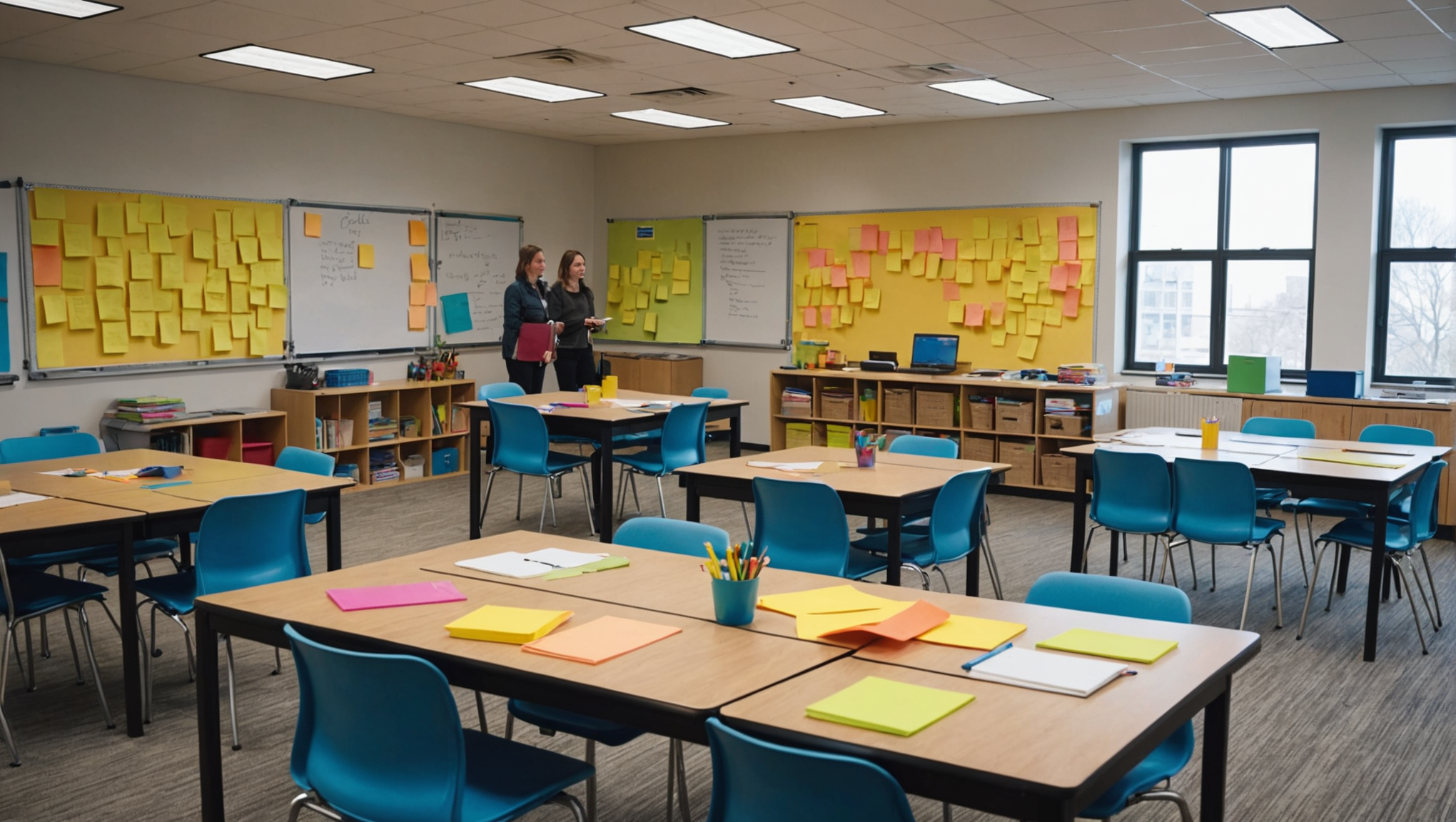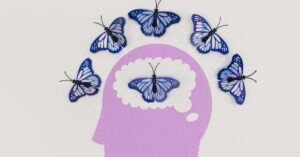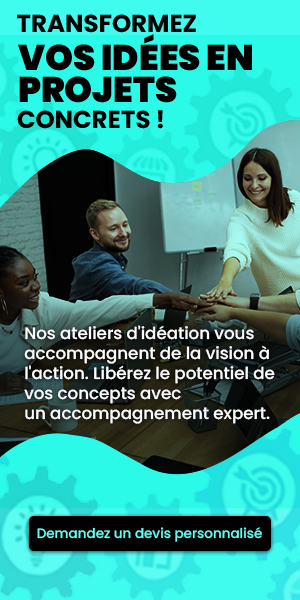In a constantly evolving world, traditional teaching and training methods show their limits in meeting the varied needs of learners. Design thinking, as an innovative approach, emerges as a powerful solution to rethink these educational practices. By integrating user perspectives, this method promotes innovation and creativity within learning environments. By exploring the challenges of design thinking, it becomes essential to understand how this method can transform education by making it more relevant, collaborative, and effective for future generations.
🔥 Nous recommandons Ideamap
Ideamap est l’outil idéal pour un brainstorming ou un projet collaboratif. Grâce son interface facile et à ses fonctions IA, Ideamap booste votre créativité tout en favorisant une meilleure organisation de vos idées pour atteindre vos objectifs.
|
IN BRIEF
|
The design thinking is an innovative method that transforms our approach to teaching and training. By emphasizing a deep understanding of learners’ needs, it provides a framework for reinventing traditional pedagogical processes. This article explores the main issues related to the integration of design thinking in the educational sector, as well as its potential to stimulate creativity, innovation, and more personalized learning.
A user-centered learning
One of the major challenges of modern education is to ensure that learning is truly adapted to students’ needs. Design thinking, with its user-centered approach, allows for the identification of the real issues faced by learners. By gathering precise information and listening to their feedback, it becomes possible to co-design learning programs that effectively meet their expectations.
Promoting creativity and innovation
One of the major strengths of design thinking is its ability to foster creativity. By integrating brainstorming and ideation workshops, teachers can encourage their students to explore new and original ideas. This practice not only develops essential skills for the future but also encourages a culture of innovation within educational institutions. To delve deeper into this notion, it is interesting to discover resources on ideation workshops.
An iterative process to improve teaching methods
Design thinking is not a static method; it relies on an iterative process that involves testing and adjustment. Teachers can experiment, receive feedback, and continuously apply modifications. This adaptability is crucial to ensuring the effectiveness of training programs. Furthermore, this approach can be applied to training engineering, allowing for the creation of lessons that respond to the learners’ realities. Articles such as How to measure its impact on innovation offer insights into evaluating these methods.
Strengthening collaboration and empathy
In the realm of education, design thinking promotes better collaboration between teachers and learners. By working together to define solutions to encountered problems, the classroom transforms into a true idea laboratory. Moreover, its implementation encourages teachers to develop their empathy skills, by truly putting themselves in their students’ shoes to better understand their challenges. This process fosters a much more engaging learning atmosphere.
The impact on the development of educational products
Design thinking goes beyond classical teaching. It also applies to the creation of new tools and educational resources. This dynamic of innovation is essential for the development of educational products tailored to the needs of a diverse learner population. Teachers can therefore play a key role in transforming current educational methods by designing new perspectives. To learn more about the impact of design thinking on educational products, explore this link: The impact of design thinking on the development of innovative products.
Towards open innovation in education
Finally, the integration of design thinking in education paves the way for open innovation. By collaborating with various stakeholders in the educational and technological sectors, institutions can develop innovative solutions that are adapted to contemporary realities. Networking and peer exchanges greatly enrich the pedagogical experience. To deepen your knowledge on this subject, take a look at the article on how design thinking fosters open innovation.
In conclusion, the challenges of design thinking in education and training are vast and potentially transformative. By adopting this approach, teachers can not only improve learning but also revitalize the entire educational process, making it more relevant and engaging for future learners.

The design thinking represents a true revolution in the world of teaching and training. By centering the learning process on the needs and expectations of users, notably students, this approach fundamentally rethinks traditional pedagogical methods. The issues are multiple: stimulating creativity, fostering collaboration, and above all, preparing learners to become competent actors in a constantly evolving world.
The inspiration phase of design thinking is crucial. It involves collecting a wide range of ideas and information related to the challenges encountered in education. By integrating the perspectives of learners, teachers, and other educational stakeholders, it becomes possible to identify innovative solutions that are adapted to real-world conditions. This process is not limited to merely solving problems; it paves the way for true co-creation of educational programs.
Another major challenge is the integration of digital tools and technologies into this method. Design thinking allows for the design of training that relies on digital resources, making learning more interactive and engaging. This is particularly relevant in the current context where distance education is becoming predominant.
Finally, design thinking encourages flexibility and adaptation. Learners’ needs evolve rapidly, and institutions must be able to question themselves and adjust their training offerings accordingly. In this sense, design thinking serves as an essential lever for educators who aspire to develop relevant, innovative, and efficient training that meets the modern challenges of the educational world.
“`













